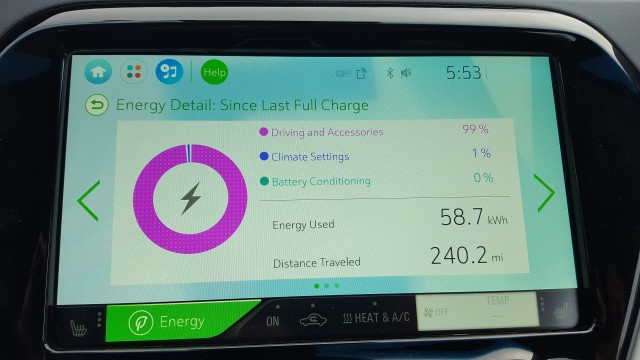brucet999
Active Member
I wish LG and GM would have tried to compete on style and performance - but, that will be the next entrant into the market, hopefully.
Are we talking all-electric Corvette here?
You can install our site as a web app on your iOS device by utilizing the Add to Home Screen feature in Safari. Please see this thread for more details on this.
Note: This feature may not be available in some browsers.
I wish LG and GM would have tried to compete on style and performance - but, that will be the next entrant into the market, hopefully.
Battery tech won't progress that rapidly anytime soon. Elon (and others) have mentioned that most of the legwork in battery design has been done already, and from here on out we will only get small improvements, barring any major breakthroughs.
The more I think about the Bolt, the more it seems an over-spec'd city car and an under-spec'd, inadequate long distance car until their DC network is much more expansive and faster. The Bolt and Model3 are both EVs, but that is about the end of it and the two cars barely cross into each other's markets. Bolt Vs LEAF will be a real fight for the leftovers that Tesla did not eat.
2017 Chevrolet Bolt EV first drive: 240 miles in an electric car
Bolt EV used 58.7 kWh during a full range test drive by media. That's almost 98% of capacity! And they probably didn't run it ALL the way down. The Bolt pretty much uses all of its 60 kWh pack. Impressive! GM wouldn't push the battery pack that hard unless they knew it could hold up over time.

On the GM website for the Bolt the small print says ~ 9.5 hours to charge to full (presumably from empty) based on 240 V, 32 A.
That works out to over 58 kWh as
0.24*32*0.8*9.5
Either GM has more than 60 kWh nominal capacity or they are giving customers the ability to really strain the battery. Gotta try and match the Tesla without superchargers, right ?
Because it makes no sense to presume from anything else unless it is explicitly stated.Why do you presume from empty?
We Drive the $30K Chevy Bolt, GM’s Tesla-Walloping Electric Car
This guy says that he put 239 miles on it and still had 23 to go. Though, the route he took probably had negative elevation, which undoubtedly helped him out...
And moderate speeds. GM chose a route to guarantee no one would get less than 240 miles to a charge. Let's see stop and go traffic, plus highway driving.
But to be fair, Bolt did it effectively on sea level, with a big hill in it. And on what seeems to be a 60kWh net capacity.Clever move by GM, forcing half the trip on a low-speed roads. I recently drove my S70 with full-charge 241 rated miles, from North Lake Tahoe to the Manteca SC (226 actual miles) over SR89, 88, 49 and 120, all two-lane highways of 55 or 60 mph speed limits, arriving with 37 rated miles. Slow speeds and a 5500 foot altitude drop do wonders for mileage.
I recall someone saying that capacity is added back (and counted in used) with regen.Or they keep a hidden capacity at the bottom?
I don't think it particularly matters. The Model 3 will for sure have range options that reach well beyond 300 miles. It'll take a while for small annual range bumps on the Bolt to reach that.So 238 miles is the 2017 Bolt's range.
Who's to say the 2018 Bolt (that is the Bolt the Model 3 will be truly going "head to head" against) won't have an incremental range bump? The Gen 1 volt had 2 (3 if you count the 2015 Volt that had a 0.6 kWh increase in battery size, yet GM didn't change the EPA numbers) range bumps, in 2013 and 2015. Would not be surprised if the 2018 Bolt has a similar bump in the event the Model 3 trumps the 2017 Bolt's EPA number.
Why is insideev reporting that DFDC comes with the Premier trim? The trim comparison page doesn't reflect that.
The Canadian price at $44395 incl. destination is lower than I expected. $37495 USD is $49500 CAD.
Depending on conversion rate at the time, the Bolt may be cheaper than the Model 3 in Canada, even at full MSRP. Conversion of $36,200 USD ($35,000 plus $1200 destination) is $47,800 CAD.
2017 Bolt EV Most Affordable Long-Range EV in Canada
Why is insideev reporting that DFDC comes with the Premier trim? The trim comparison page doesn't reflect that.


